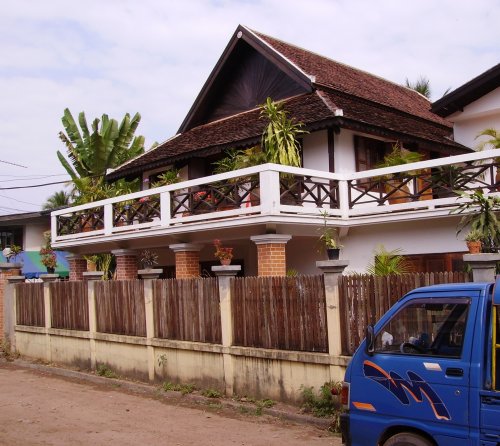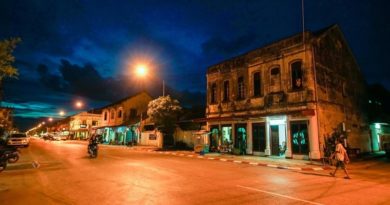Heritage Architecture Being Lost
Heritage officials have expressed concern over the number of French colonial buildings that have disappeared from the capital due to urbanisation in recent years.
There are growing concerns that much of the colonial architecture in Vientiane, which is part of the national heritage of Laos, is being demolished without permission in order to develop the land, particularly in the city.
Deputy Director General of the National Heritage Department of the Ministry of Information, Culture and Tourism, Ms Chanphone Xayalath, said they are aware of this ongoing phenomenon.
She said despite the fact they keep warning the owners to consult with the department before undertaking extensions or renovations, many people still neglect to do so.
“It happens, when some owners come to report to us after their finished their extensions. Sometimes, we discover on our own that the owners have breached the heritage law even though their houses are already registered,” she said.
 |
|---|
|
This house is of one the remaining examples of colonial era architecture that has been well-preserved in traditional style. |
The Law on Heritage has already been put in place, but the department believes that there is a need for it to take stricter measures to ensure that these valuable examples of architectural heritage are well-preserved for the next generation, she said.
The French colonial architecture that has remained in the country since France left Laos is one of the unique attractions of the nation, which continues to attract many tourists to the country. The department will impose more regulations in an effort to counter the problem of non-compliance with heritage laws and the disappearing houses.
The famous restaurant Khop Chai Deu, located in the centre of town is an example of one of the colonial buildings that has been kept alive after the revolution. However, much architectural heritage has been affected by urbanisation while others have been left to deteriorate and are badly in need of renovation.
“Some people ask why do we have to preserve this old stuff because the rest of the world has embraced development,” Ms Champone said. “We agree on that, but we have to keep a balance, especially concerning heritage architecture, which is precious and cannot be built anymore.”
According to her, the dep artment allows owners of heritage buildings to renovate and extend them as long as they consult with the department about their plans. Some owners agree on the plans, but it later turns out that they did not stick to the plans at all. “One of the most important things we have to keep in mind is that this is part of our history,” Ms Champone said.
Laos is in the transition of industrial development, which will pose challenges for the country in terms of preserving its architectural heritage and resist the temptation for everything to be new.
One of the reasons that tourists come to Laos is to see not only the natural beauty, but also the national heritage, of which the French colonial buildings are an integral part, despite the turbulent history of the country
Some people are concerned if these heritage buildings are turned into modern style or five star hotels Laos may miss the opportunity to benefit from the tourism potential they offer, and their value is being ignored.
Published with the permission of Vientiane Times


